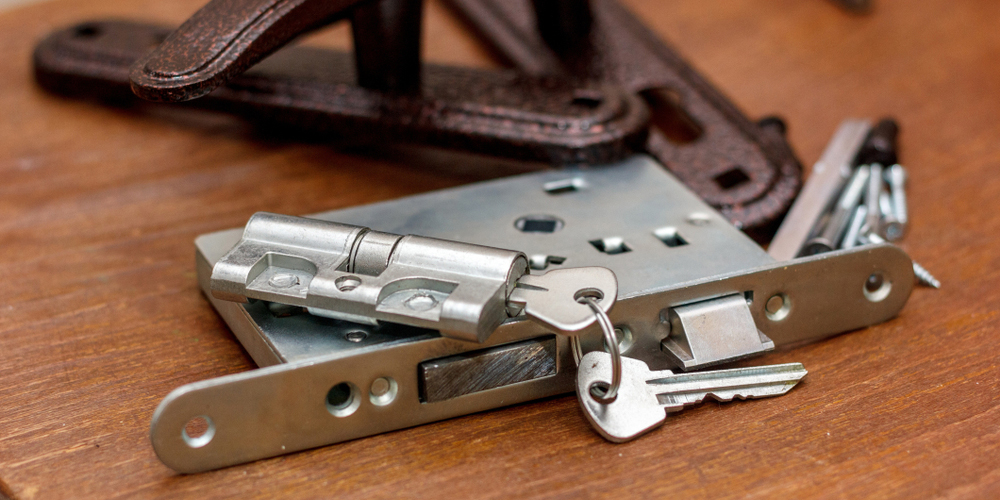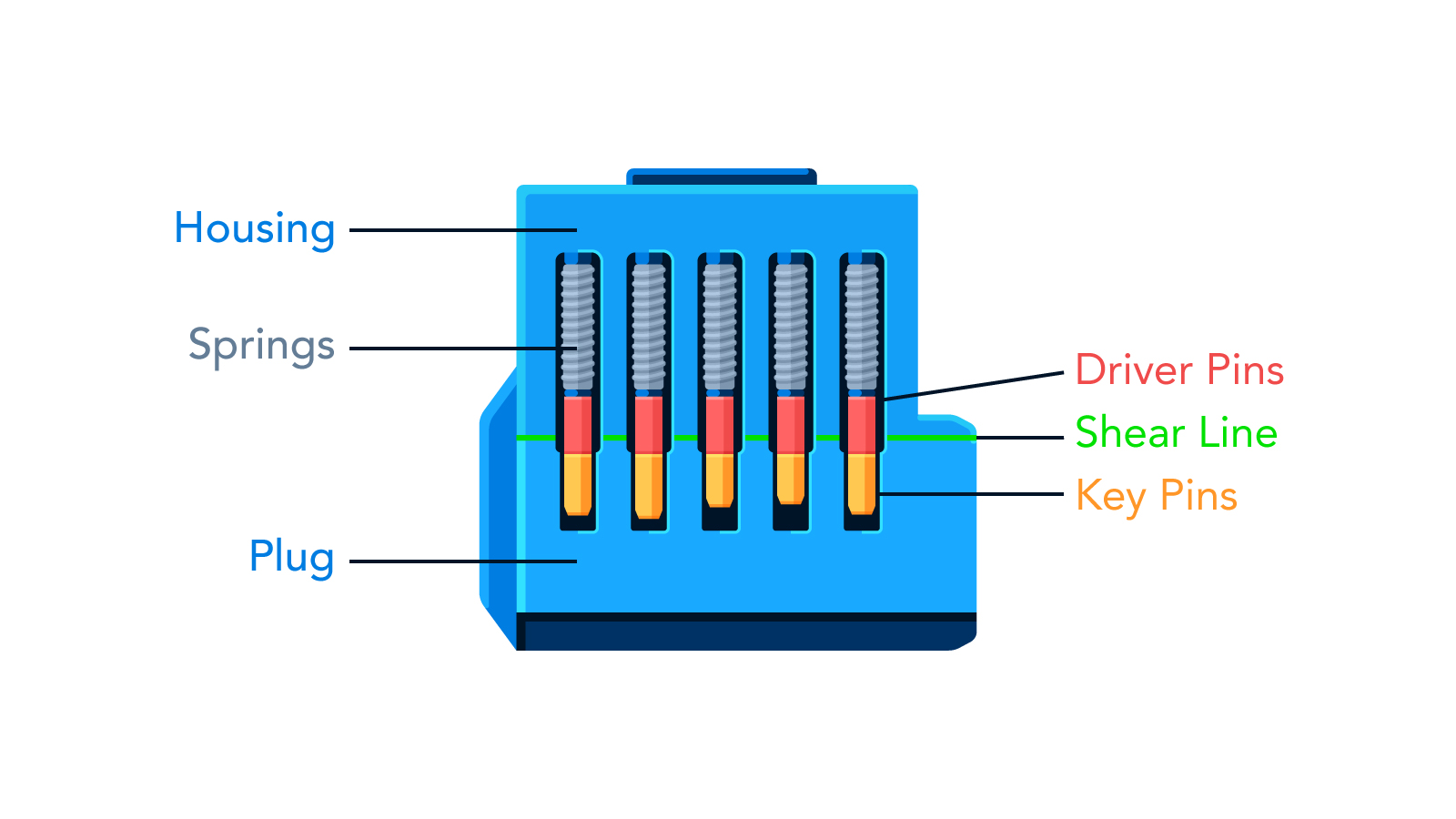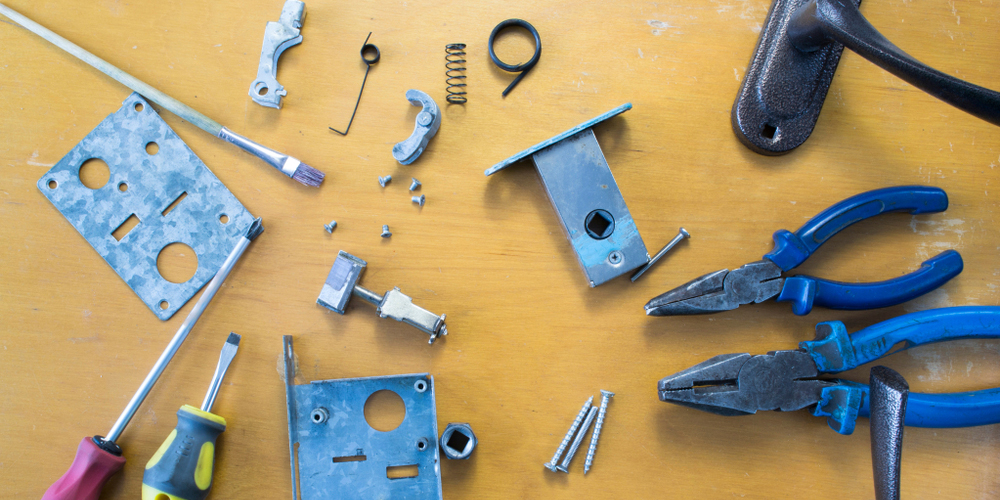Lock Blog
A resource for consumers, locksmiths, and security professionals
A resource for consumers, locksmiths, and security professionals

There are many things you can do with door lock tumbler replacement. The possibilities go beyond simply rekeying your locks by the means of key tumbler replacement. Find out the options for your locks and how lock tumbler replacement can help you to achieve your goals.
Tumblers, also known as pins, are the internal components of locks of the pin tumbler variety. These parts of the lock are what make certain keys work in the lock and keep all others from opening the lock. In order to understand the various ways you can approach lock tumbler replacement, you have to understand what parts of the lock are being replaced and how they are important to the lock’s functionality.
Inside a basic pin tumbler lock you have several pin stacks (most often five). Each pin stack has at least three parts:
Springs – A pin stack is made up of at least two pins and one spring. The spring places the stack under pressure so that pins reset fluidly after they have been raised by a key. Springs can be made of different metals to provide a variance of pressure, but they are often standard within most locks.
Key Pins – The tumblers/pins that are touched by the key are called the key pins. (Though they are called pins, this is a word used interchangeably with “tumbler”.) The key pins are cut to different heights that correspond to the varying groove depths on a key. Unless the key is made with the key pins’ sizes in mind, it will not open the lock. If you wanted to get a lock to open with a different key instead of a general lock tumbler replacement, you would use key tumbler replacement (more commonly referred to as “rekeying”).
Driver Pins – The driver pins rest sandwiched between the key pins and the springs. They are a standard height and do not touch the key when it is actuating the lock. For that reason, they rarely wear down and are not involved in something like a key tumbler replacement. In terms of lock tumbler replacement, driver pins are often swapped out for pins of a different shape (though not a different height).

In order to know the difference between lock tumbler replacement and key tumbler replacement, you need to comprehend these parts make a lock work. For a lock to open, the pin stack (tumbler stack) needs to be elevated to a particular height by the proper key.
This is why the key tumbler (key pin) and key need to be made for one another. A shallow groove on a key needs to line up with a longer key pin, and a short pin will need a higher groove so that all the pins can rest at a uniform height. The reason this uniform height matters has to do with the construction of a pin tumbler lock.
A pin tumbler lock has two basic parts:
Plug – This is the part of the lock that the key is inserted into. It holds the keyway and rotates when the lock is open. This rotation moves a stationary tailpiece or cam on the back of the plug, which will actuate a bolt, latch, etc. Without the proper key, the plug will not spin and the lock will not open.
Bible – This is the housing for the plug. It remains stationary at all times, even when the proper key is used to open the lock. The springs emanate from the bible and push the pin stack into the plug to bind the plug to the bible.
The point that these two parts meet is called the “SHEAR LINE”. It is the gap between the plug and bible that allows the plug to rotate within the bible. That rotation means that the lock is open. But in order for that rotation to be possible, nothing can be blocking the shear line.
This means that the key must elevate the pin stack so that the driver pin and spring rest in the bible and the key pins rest in the plug. If the driver pins are under set (key groove is too deep), they will catch on the shear line and bind the lock. If the driver pins are overset (key groove is too shallow), the key pins will bind at the shear line.
The number one reason to undergo this type of lock tumbler replacement is for greater security. Often the lock tumbler replacement will be handled by switching out the standard driver pins with more exotic tumblers. These exotic tumblers are more commonly referred to as security pins.
You can see a good example and explanation of this sort of thing with the pin in pin security pins. The basic intent of re-pinning as a method of lock tumbler replacement is that the driver pins will get hung up on the shear line when someone is trying to covertly open the lock.
This type of lock tumbler replacement helps prevent lock bumping and make lock picking more difficult. As the driver pin is the first pin that will pass the shear line, and perhaps the only, it is the most likely to be re-pinned. In the most extreme examples of lock tumbler replacement, you may choose to replace the key pins with security pins.
The thing that you must be careful of is that the key pins must always correspond to the key being used in the lock. Key tumbler replacement is not viable for re-pinning if you are not cognizant of pin height.
The most common type of lock tumbler replacement is rekeying a lock. You might hear this method sometimes referred to as key tumbler replacement. This is because you are replacing the key pins (key tumblers). The purpose of this lock tumbler replacement is to make an existing lock open with a different key.
Very often, you will see key tumbler replacement used to make several locks work with a single key. In the case of high-security padlocks and many door locks, this lock tumbler replacement cuts down on the number of keys a facility manager or homeowner needs to carry around with them.
The cost of rekeying a lock can vary quite a bit depending on who does the key tumbler replacement. However, all you need is a key and the corresponding set of key pins in order to complete this process. If you are trying to rekey your locks instead of changing locks, this is much simpler to do yourself than something like keying a set of locks the same.
For standardized key tumbler replacement, you will need to know the exact size of your pins, which will likely require a key decoder and a pinning tray. The key decoder will get you the groove depths of your keys, and the pinning tray will tell you which pins to use and provide them in the number they are needed.
The final type of lock tumbler replacement is making a master key system. The driver pins will stay the same for this lock tumbler replacement, but you will be doing some key tumbler replacement. Basically, you will be replacing the key pin and adding master wafers. A master wafer is an additional tumbler that goes between the driver and the key pin.
Having three pins in your stack of lock tumblers creates the existence of a second possible shear line. Not in a literal sense. There is still only one gap between the plug and the bible of the lock, but now the pins stacks can line up in that gap two different ways.
With two different ways for each pin stack to set appropriately, you can have two keys open one lock. One key will move the lock tumblers to one height, and another key will lift the tumblers to a different height. This does create several vulnerabilities for your lock, such as increasing the ease of decoding and greater vulnerability to both raking and single pin picking.
The beauty of master keying is that you can use this lock tumbler replacement across a series of locks in several different buildings. You are rekeying locks to open with one key while still restricting the access of certain individuals that will only be able to open only one lock.

Door lock tumbler replacement is one of the best ways to save money on new locks, increase your security, and layer your access control. It is always a good idea to have this work done by professional locksmiths so that you do not damage your locks. The process of any type of lock tumbler replacement can leave you needing brand new locks if handled inappropriately. Take care of your locks and your security, and reach out to locksmith if you ever need assistance.
Category: Commercial, Residential, Safety & Security